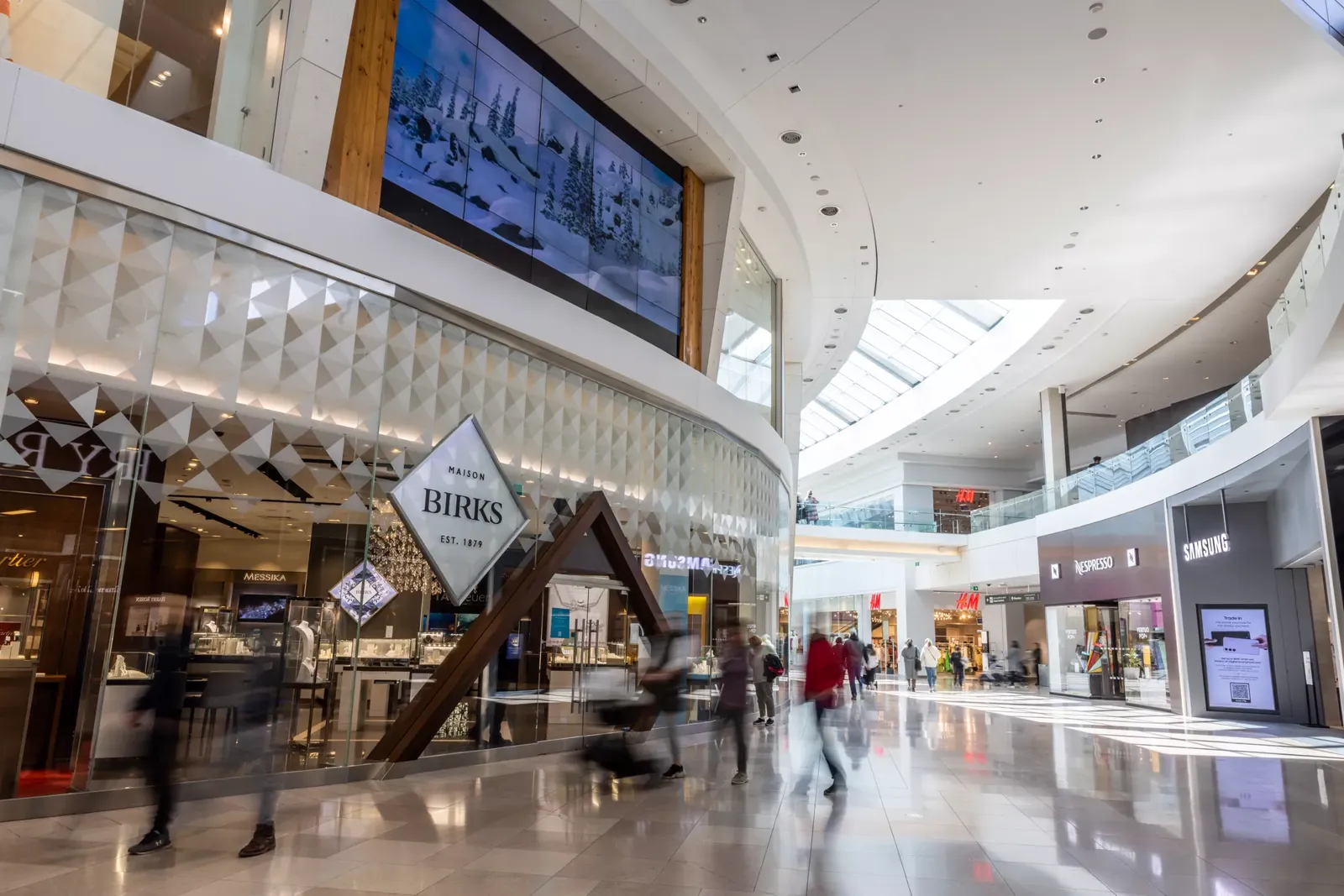
Toronto police are investigating a brazen smash-and-grab robbery that occurred at a jewellery store in Sherway Gardens Mall, Etobicoke, on Saturday afternoon. The incident, which left display cases shattered and staff shaken, highlights the concerning rise of retail crime in major urban centres.
The Incident
At approximately 4:45 p.m., police received reports of five individuals storming into a jewellery store within the mall. The suspects were seen smashing glass display cases and seizing high-value items before fleeing the scene.
While police have not confirmed the total value of stolen merchandise, the operation appeared calculated and swift. Fortunately, no injuries were reported. At this time, no detailed descriptions of the suspects have been released, and investigators are urging witnesses to come forward with information or footage that may assist in the case.
Sherway Gardens Mall, a popular shopping destination, has been the target of similar incidents in the past, though this robbery stands out for its audacity.

The Rise of Smash-and-Grab Robberies
Smash-and-grab robberies are not a new phenomenon, but their frequency has escalated in recent years. These crimes typically involve small groups of individuals who quickly break into a retail space, snatch valuable goods, and escape before security or law enforcement can respond.
Retailers specializing in high-value merchandise, such as jewellery, luxury watches, and electronics, are often targeted. The damages extend beyond the stolen goods, with extensive costs associated with property damage and loss of consumer confidence.

Trends and Challenges in Retail Security
Experts point to several factors contributing to the rise in these types of crimes. Economic pressures, the influence of organised crime groups, and gaps in retail security protocols have all been cited as significant contributors.
Canada’s larger metropolitan areas, including Toronto, Vancouver, and Montreal, have seen a marked increase in these incidents. Law enforcement faces challenges in addressing such crimes due to their rapid nature and the frequent lack of identifiable evidence left behind by the perpetrators.
Retailers have been responding by investing in advanced surveillance systems, security personnel, and even specialised training for staff to handle such situations. However, these measures come at a cost, which is often passed on to consumers through higher prices.
The Community Impact
Incidents like the Sherway Gardens robbery ripple through the community in more ways than one. For businesses, the financial toll is significant, often compounded by increased insurance premiums and potential reputational damage. For shoppers and employees, such events can create a lingering sense of unease.
The mall’s management has reassured visitors that they are cooperating fully with authorities to enhance security and prevent future incidents. Community leaders have echoed calls for vigilance, encouraging individuals to report suspicious behaviour promptly.

Preventing Future Crimes
While retailers and police continue to refine their strategies, there are steps the public can take to mitigate risks. Awareness campaigns, community policing initiatives, and better communication between mall operators and law enforcement are proving effective in some areas.
For individuals, staying alert, avoiding engaging with fleeing suspects, and providing detailed information to police can be invaluable. In some cases, public cooperation has been instrumental in cracking organised crime rings responsible for similar robberies.
The smash-and-grab robbery at Sherway Gardens underscores the growing challenges of retail security in Canadian cities. As investigations continue, the hope is that heightened awareness and collaboration between businesses, authorities, and communities will deter such acts in the future.
For now, Toronto police are working tirelessly to track down the suspects, urging anyone with information to contact them or leave an anonymous tip through Crime Stoppers.
This incident serves as a reminder of the resilience of communities when faced with adversity—and the importance of collective action to safeguard public spaces.


















